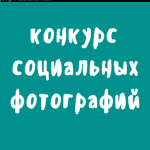Macroeconomy. May 2009
The macroeconomic overview provided by SigmaBleyzer Company
The government estimates that Kazakhstan's economy shrank by at least 2% yoy during the first quarter of 2009 (compared to 6.1% growth the year before) as weak performance of industry, trade and construction weighed down economic growth (see chart 1). Above all, anemic bank lending and the private sector's dwindling cash reserves led to a 5% yoy drop in fixed capital investments (compared to a 16% yoy increase in the first quarter of last year). Meanwhile, falling home prices and restricted access to mortgage lending continued to exact a toll on the construction sector. Indeed, during the first three months of 2009, the volume of construction works declined by 4.2% yoy. This, in turn, depressed business activities in construction related industries, such as transportation and production of construction materials.
In addition, this year the negative impact of falling domestic demand is augmented with unfavorable demand conditions in Kazakhstan's main export markets. During the first quarter of 2008, the economy benefited from the commodities boom and strong demand from key trading partners, especially Russia, other neighboring CIS countries and China. However, the slowing global economy caused Kazakh exports to decline across virtually all commodity groups during the first few months of 2009. This combination of rapidly deteriorating external conditions and weak domestic demand resulted in a 4.6% yoy decline in industrial production during the first quarter of 2009 (see chart 2).
Above all, in January-March, metallurgy, which accounts for about 40% of total output in manufacturing, shrank by 15.3% yoy as ferrous metallurgy declined by over 22% yoy. This means that about a third of the 12% yoy decline in manufacturing output was caused by lower demand for iron and steel. More than that, nearly 3/4th of the drop in industrial production came from the weaker performance of manufacturing as machine building, chemical and fuel processing industries significantly cut production compared to the positive, albeit modest, output gains during the first quarter of 2008. As a result, the falling output of these three industries alone added 1 percentage point to the contraction of industrial output. Lastly, industries producing construction materials remained on a downtrend as domestic and foreign demand (particularly from Russia) continued to weaken on the back of collapsing housing markets.
All told, export oriented industries (such as metallurgy) saw their share in manufacturing output decline, while the share of industries that rely on domestic demand (for example, food processing) grew.1
1. The share of metallurgy in manufacturing output stood at 33% in the first quarter of 2009 – down from nearly 50% a year ago.
Indeed, the share of food processing in total manufacturing output widened from 19% in January-March 2008 to over 25% in the first quarter of this year. Moreover, during the first three months of 2009, food processing declined by only 2.3% yoy (compared to a 4% yoy drop the year before).
After all, a high share of foods in household expenditure (about 44%) and consumer retrenchment in spending on durable, mostly imported, goods will eventually favor local producers of staple consumer products and may help to mitigate the impact of weaker demand from abroad.
Furthermore, Kazakh industry performed relatively well compared to double digit declines of industrial production in peer CIS economies.2
2. For example, during the first quarter of 2009, industrial production in Russia, Ukraine, Kyrgyzstan, Moldova and Armenia declined by 14.3% yoy, 31.9%yoy, 19.5% yoy, 24.2% yoy and 9.5% yoy, respectively.
It appears that a high share of the oil and gas industry in total industrial output (about 57%) adds resilience to industrial performance as the extraction of crude oil and natural gas (up by 2.4% yoy during the first quarter of 2009) remains on an uptrend. However, this also means that industrial performance still depends on a steady expansion of production capacities in the oil sector. Although, several setbacks have pushed the launch of operations at the largest oil filed (the Kashagan offshore project) to 2013, the near-term prospects for the oil industry remain promising. Energy thirsty China is likely to emerge as a major consumer of Kazakhstan's crude oil and natural gas by supporting the development of transit and production infrastructure of the Kazak energy sector. Indeed, in April, China National Petroleum Corporation agreed to lend $5 billion to the state oil and gas company KazMunaiGas to purchase the fourth largest Kazakh energy company JSC MangistauMunaiGas (MMG) for $3.3 billion.3
3. According to this agreement, China National Petroleum Corporation and KazMunaiGas will own MMG on a parity basis through the newly established Mangistau Investments joint venture.
This company controls an estimated 500 million barrels in oil reserves, is a majority shareholder of the Pavlodar oil refinery (one of the three refineries in Kazakhstan), and owns a retail network of gas stations. In addition to financing the MMG deal, part of the $5 billion loan to KazMunaiGas will be invested in the Beyneu-Akbulak gas pipeline, which will link western and southern regions of Kazakhstan. This pipeline could eventually provide China with access to Turkmen natural gas. The Export-Import Bank of China will also open a $5 billion credit line for the Development Bank of Kazakhstan (which functions under the umbrella of the Samruk-Kazyna National Welfare Fund). This loan will be used to finance economic diversification projects in Kazakhstan.
During the first quarter of 2009, state budget revenues grew by 7% yoy to $5.7 billion. However, tax revenues continued to decline, albeit at a slower rate, falling by 9.3% yoy to $3.7 billion or 65% of all budget revenues (compared to 76% the year before). In particular, proceeds from the VAT, social, personal and corporate income taxes declined by 27% yoy, 16% yoy, 4.9% yoy and 5.8% yoy, respectively (see chart 3). Meanwhile, transfers from the National Oil Fund grew by 75% yoy to $1.8 billion or 31% of all budget revenues (compared to 19% in the first quarter of 2008). As a result, these transfers helped to offset fiscal revenue shortfalls and insured the growth of total budget revenues.
State budget expenditures grew by only 4% yoy to $5 billion as government slashed spending on defence, energy, transport and communications. At the same time, spending on social security jumped by 26.5% yoy to 27% of all budget spending (compared to only 22% the year before). As a result, higher spending on wages in the public sector and transfers to the population (such as pensions and stipends) pushed the share of current expenditures of the state budget to nearly 85% compared to 74% a year ago. Meanwhile, capital spending of the state budget remained virtually flat, marginally sliding by 0.7% yoy to only 15% of total expenditures (excluding operations with financial assets and public debt repayments).
During the first quarter of 2009, the state budget surplus stood at $630 million or about 0.5% of the projected full year GDP (compared to a 0.15% surplus in the first quarter of 2008, see chart 4). However, the non-oil cash budget deficit (which excludes operations with financial assets and transfers from the National Oil Fund) slightly widened to 0.9% of GDP from 0.4% a year ago.
All told, slower economic growth is increasingly likely to push the cyclical component of the budget deficit deeper into negative territory. Furthermore, imports generate nearly one fourth of total fiscal revenues (both as VAT payments and custom duties). This means that rapidly falling demand for imports will put additional pressure on public finances. Nevertheless, Kazakhstan can still afford to run loose fiscal policy thanks to its past prudent budget management and ample savings of oil wealth (by the end of March, the assets of the National Oil Fund stood at $22 billion). Equally important, foreign public debt remains at a minimal level ($1.6 billion at the end of the first quarter of 2009). All this means that fiscal stimulus is a feasible option to mitigate the impact of the global recession without damaging the sustainability of budget policies. Lastly, a recent reform of the Tax Code, which considerably reduced the tax burden, came in handy as local companies saw their profits plunge and workers' incomes stagnated. Indeed, lower taxes will not only enhance international competitiveness but may also provide an extra fiscal boost to the ailing economy.
In March, the consumer price index (CPI) grew by 8.9% yoy as prices of non-foods increased faster than the month before on the back of more expensive imports. In particular, prices of non-food products grew by 1.5% month-over-month (mom) driven by higher prices of household items, personal care products and medicine. As a result, the annual inflation of non-food commodities accelerated from 5.9% yoy in February to 7.1% yoy in March. On a positive note, falling prices of crude oil drove down domestic prices of fossil fuels (in March, prices of gas and diesel declined by 0.6 mom and 1.6 mom, respectively), which helps to partially offset the inflationary impact of currency devaluation. Prices of foods remained mostly flat (inching up by only 0.6% mom), mirroring the price trends on the global markets for staple foods. This means that during the first three month of 2009, the contribution of food prices to inflation narrowed to about 40% compared to 60% in the same quarter of the previous year (see chart 5). Meanwhile, higher service tariffs generated over one third of the overall inflation compared to about one fifth the year before as postal, communication, education, healthcare, recreational and hospitality services became more expensive.
Nevertheless, Kazakhstan is likely to see modest upside risks to price stability in the medium term. Indeed, a sharp downward correction of global energy and food prices as well as cooling domestic demand will restrain the growth of consumer prices, especially prices of fossil fuels and agricultural products. This means that the 9.5% annual inflation projection of the National Bank of Kazakhstan remains a feasible and comfortable target. Still, risks of further currency devaluation add an extra layer of uncertainty to inflationary expectations. All told, exchange rate stability, which may come under increasing pressure due to falling export revenues and sizable outflows of borrowed foreign capital, will be one of the near-term policy priorities of the central bank.
Still, reviving the ability of the banking system to create new credit remains the top goal of the government. Authorities have already pledged to inject KZT 332 billion (or about $2.2 billion) of additional capital into the four Kazakh banks (including purchases of majority stakes in two ailing local banks). An additional KZT 528 billion (or $3.5 billion) was allotted to thirteen banks to encourage loan refinancing programs as well as the resumption of residential mortgage and small business lending.
Obviously, the lag between these stabilization measures and the response of the banking sector and the real economy implies that the impact of these policy actions may become visible in the second half of the year. Indeed, domestic credit barely grew since the financial sector stabilization program was launched at the beginning of February. In particular, the stock of Tenge denominated credit fell for the sixth month in a row (see chart 6). Meanwhile, the stock of forex denominated credit grew at a much slower pace than a year ago. Furthermore, credit growth is generated by corporate borrowing in foreign currencies, while loans to households (both forex and Tenge denominated) continued to decline. During the first quarter of this year, households decreased their forex and Tenge denominated debt to banks by 4.5% ytd and 3.8% ytd, respectively (during the first quarter of 2008, the corresponding falls stood at 1% ytd and 3.6% ytd, respectively). The corporate sector has also reduced Tenge denominated bank borrowing as during the first quarter of 2009, net Tenge denominated credit to the corporate sector fell by 7.2% ytd. However, forex denominated credit to the corporate sector grew by 4.7% ytd. A dominant share of the trade sector (which received about one third of all new loans issued by banks in the first quarter of 2009) may explain this trend as trade in Kazakhstan heavily relies on imports.
Finally, the speed of recovery of the Kazakh banking system depends both on the efficient implementation of the stabilization policies and the revival of the global financial markets. On the first count, readings on the rate of utilization of the public funds allocated to banks remain mixed. According to the Financial Supervision Agency of Kazakhstan (FSA), by the last week of April, 72% of funds assigned to recapitalize banks and 53.5% of funds distributed to support small business lending were utilized. At the same time, only 21.3% and 9.5% of funds allocated to stimulate the housing market and revive credit to the real sector, respectively, were used by the participating banks. Nevertheless, banks are expected to complete state-sponsored refinancing programs by the end of May.
However, authorities' actions to restore the health of the banking system may come under stress as concerns over the solvency of systemic banks continue to grow. Indeed, deteriorating quality of credit portfolios and forthcoming repayments of banks' foreign debt may exert a heavy toll on banks' capacity to fund new credit creation. The President of Kazakhstan has already instructed the FSA to study the possibility of restructuring banks' foreign liabilities. Two of the country's banks (BTA bank and Alliance bank – both majority owned by the state) are expected to approach creditors with debt restructuring plans. In particular, Alliance Bank (which has about $4 billion in foreign debt) has requested a three-month moratorium on debt repayments. In 2009, the bank must pay back about $570 million and it has already missed a loan repayment in March. At the end of April, BTA bank (which has to repay $3 billion in 2009) suspended principle payments on its foreign debt, having defaulted on $550 million of loans that were called in by creditors due to a change of bank's ownership. The bank is expected to present debt restructuring plans to creditors and shareholders in May. Lastly, at the beginning of May, Fitch downgraded three Kazakh banks – Halyk Bank (B+), Kazkommertsbank (B-) and Bank CenterCredit (B) on expectations of a lower likelihood of further state support and rapidly deteriorating quality of banks' assets. All told, the possibility of the eventual restructuring of the foreign loans owed by Kazakh banks has significantly increased.
International Trade and Capital
During the first two months of 2009, exports fell by 48.4% yoy to $5.6 billion, while imports declined 17.4% yoy to $3.8 billon. Although there are some signs that the pace of export contraction may be slowing down, the monthly trade in goods surplus still hit another low in February, narrowing to just $0.75 billion (see chart 7).
Essentially, despite growing volumes of exported crude oil, export revenues will continue to plunge as world crude oil prices remain significantly lower than a year ago (see chart 8). A recent stabilization of global energy prices and prices of industrial metals is likely to prevent deeper falls of export revenues. Nevertheless, shrinking foreign trade surpluses are poised to widen the current account gap in 2009. On a positive note, the retrenchment of demand for imports is unlikely to loose speed, which may help to contain the current account deficit within a manageable range. Indeed, weaker investment and consumer spending triggered visible declines of imports across a board group of commodities. Furthermore, imports from the CIS countries, which generated nearly 60% of the 15.7% yoy growth of imports in 2008, decreased faster (down by 26.6% yoy in January-February 2009) than imports from the rest of the world (down by 9.9% yoy).
Sergey Kasyanenko, Edilberto L. Segura










